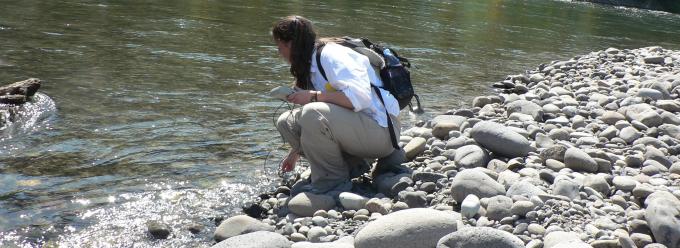
The Influence of Hyporheic Flow on River Temperature: River water emerging from naturally occurring gravel bars on a hot summer day may be as much as 2°C cooler than mainstem flow. We explored the potential thermal benefits of hyporheic exchange from proposed gravel augmentation on the Clackamas River, Oregon.
The hyporheic zone influences the thermal regime of rivers, buffering temperature by storing and releasing heat over a range of timescales. We examined the relationship between hyporheic exchange and temperature along a 24-km reach of the lower Clackamas River, a large gravel-bed river in northwestern Oregon (median discharge = 75.7 m³/s; minimum mean monthly discharge = 22.7 m³/s in August 2006). With a simple mixing model, we estimated how much hyporheic exchange cools the river during hot summer months. Hyporheic exchange was primarily identified by temperature anomalies, which are patches of water that demonstrate at least a 1 °C temperature difference from the main channel. Forty hyporheic temperature anomalies were identified through field investigations and TIR (Thermal-Infrared-Radiometry) in summer 2006. The location of anomalies was associated with specific geomorphic features, primarily bar channels and bar heads that act as preferential pathways for hyporheic flow. Detailed field characterization and groundwater modeling on three Clackamas gravel bars indicate residence times of hyporheic water can vary from hours to weeks and months. This was largely determined by hydraulic conductivity, which is affected by how recently the gravel bar formed or was reworked. Upscaling of modeled discharges and hydrologic parameters from these bars to the other anomalies on the Clackamas network shows that hyporheic discharge from anomalies comprises a small fraction (<< 1 %) of mainstem discharge, resulting in small river cooling effects (0.012 °C). However, the presence of cooler patches of water within rivers can act as thermal refugia for fish and other aquatic organisms, making the creation or enhancement of hyporheic exchange an attractive method in restoring the thermal regime of rivers.